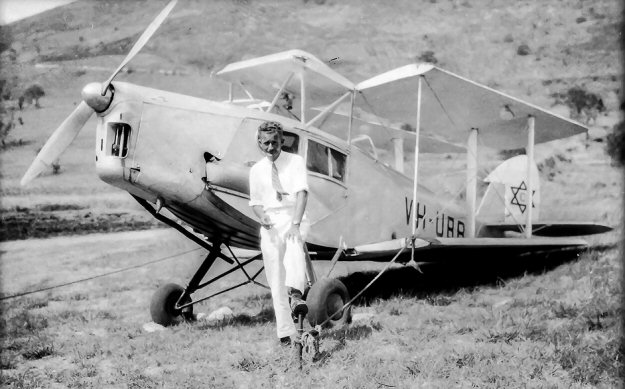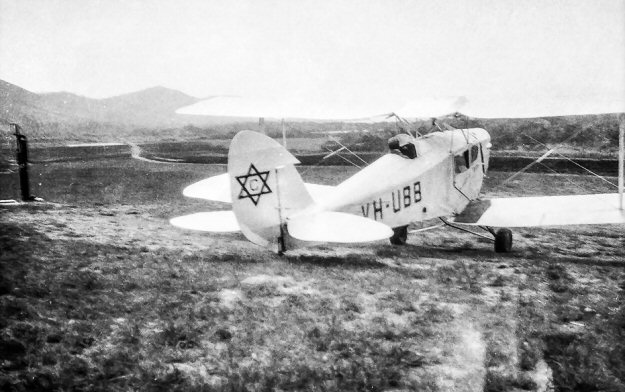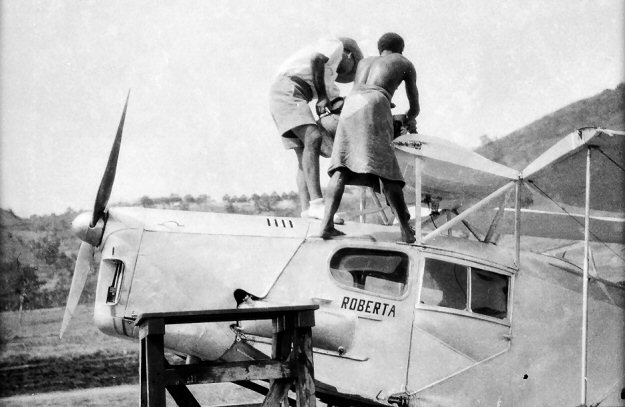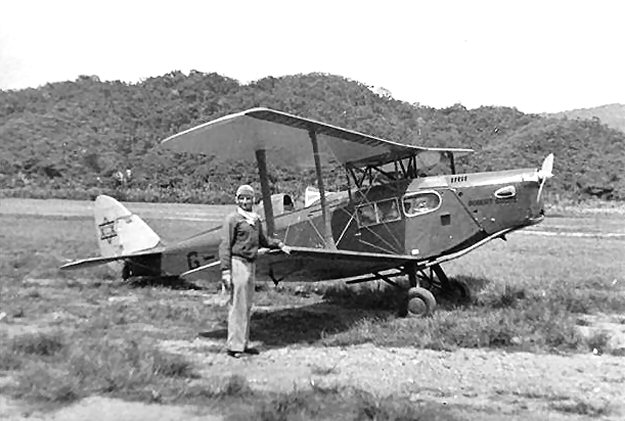VH-UBB de Havilland D.H.83 Fox
Moth
(c/n 4090)

The three
photos above and below came from the family album of Leon Hides and
were taken
at Port Moresby, circa 1939. Ex G-ACRK, this Fox Moth
was acquired by W.R. Carpenter
and Co. of Salamaua, New Guinea in October 1935. This early rego
was way out of sequence
as, when the Civil Aviation Branch of the
Dept of
Defence started issuing civil registrations in
1921, the double
last-two regos were deemed 'not to be allocated'. This rule was
rescinded
in the
early 1930s and hence this Fox Moth became -UBB. The
aircraft had had
an interesting
history before
arriving in Australia. Its original owner was John Grierson of
Rochester who named
it "Robert
Bruce". It had been specially modified with Short Bros
floats for an England to Canada
flight via Iceland and the
Greenland Ice Cap in July 1934. However, it was damaged at
Reykjavik,
Iceland and Grierson returned to England with damaged parts for repair.
The flight was recommenced
a month later
and arrived in Ottawa on 30 August 1934. It crashed
in the Ottawa River on tests
near Rockcliffe, Ottawa on 6
September 1934; was repaired and arrived in New York later that
month. When bought by Carpenter it was renamed "Roberta"
(see photo # 3 below).
It passed to Mandated Airlines Ltd in 1936 and was damaged in a forced
landing at
Bulolo River,
in
July 1941, and the remains were destroyed by the
Japanese air attack on the region in 1942.
At the foot of the page is a photo from the Wally Civitco collection
showing the Fox Moth in
New Guinea as G-ACRK, circa 1935.






